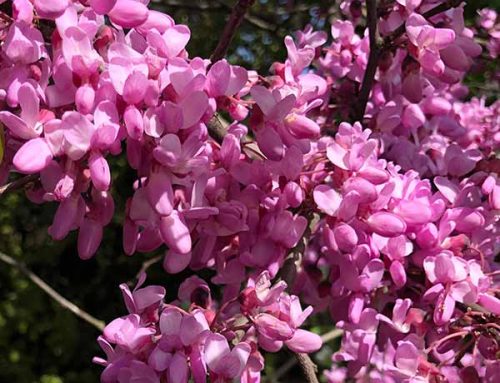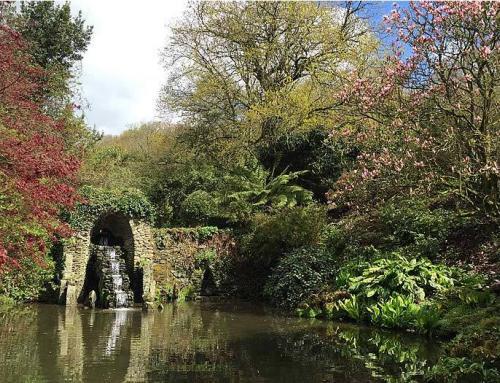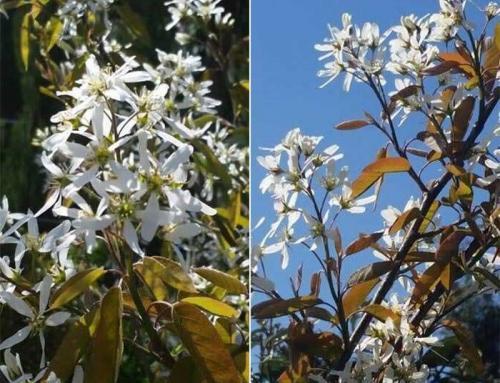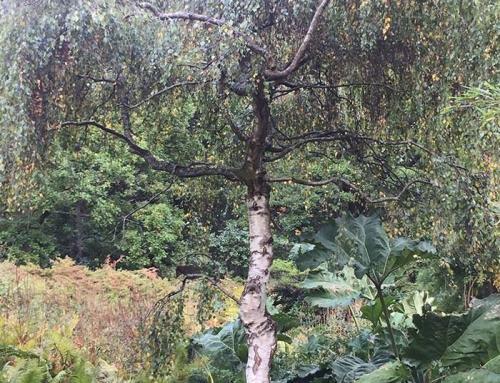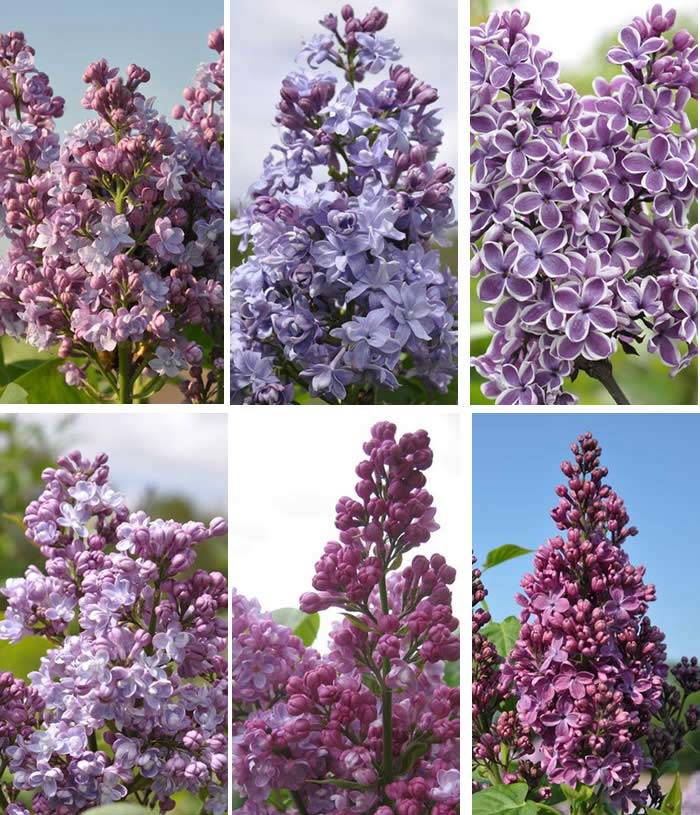
Common Lilacs From Top Left: Syringa Vulgaris Michel Buchner, Syringa Vulgaris Nadezhda; Syringa Vulgaris Sensation; Madame Antoine Buchner, Belle De Nancy and Ruhm Von Horstenstein
It’s funny to think that the gorgeous lilac tree has become something of a rarity in the contemporary gardens of today, especially as the Common Lilac Tree (Syringa Vulgaris) has so much to commend it. Originally introduced way back in the 16th century, the vast range of garden lilacs we use today originated from this plant – Syringa Vulgaris or the Common Lilac.
Lilac Trees are much loved and lauded in literature and song down through the years. Lilac is a deciduous flowering tree or shrub that is small to medium sized (depending on the variety) and produces fabulously fragrant blooms in late spring / early summer. The lilac blooms famously can be used as cut flowers. This means you can fill your home with the heady scent of fresh-cut lilac blooms in May and June, the large panicles being particularly invaluable for larger vases. Meanwhile, back in the garden, Lilac is extremely popular with pollinating wildlife and will bring butterflies and bees into the garden from far and wide. Once the flowering period is over, you will be left with a small tree or shrub with attractive mid-green foliage.
Lilac Trees are easy to grow – in fact they are quite carefree and don’t need much looking after. Once established, they are very drought hardy. All they really ask is a sunny position and well-drained soil (originated as they did from the hills of the Balkans). If you want to maintain a particular shape, you can prune them, although not in winter. Pruning of lilacs is best done immediately after flowering. They respond well to pruning and can be cut back quite hard. Lilac lends itself to shaping – and can be grown as a small tree (depending on the cultivar can vary in size from 2 to 10 metres) or a shrub. The flowers grow in large panicles.
Lilacs can embellish your woodland garden, they grow well in containers (not least because of their high tolerance of drought) or you can grow them as a stand-alone focal point.
The Lilac Tree (which is actually a member of the Olive family) originates from South Eastern Europe. Lilacs were first introduced to the UK back in the 1500’s and have stayed with us ever since. It was however in the late 1800’s when the popularity of the Lilac truly took off when French hybridiser Victor Lemoine introduced about 150 new cultivars – and everyone had to have a lilac tree in their garden. In fact, Syringa Vulgaris Madame Lemoine, which dates from 1890 and produces pure double white flowers is an example of a Lemoine hybrid.
Other excellent performers include Common Lilac Syringa Vulgaris Sensation with rich purple-red flowers with a white edge. Syringa Vulgaris Belle De Nancy has highly scented, mauve-pink double flowers. Common Lilac Syringa Vulgaris Michel Buchner has large trusses of fragrant pale pink flowers. Syringa Vulgaris Alba or the Common White Lilac is a true old-fashioned garden favourite with a vase-shaped upright form. In April and May the shrubs are covered in dense panicles of delicate, pure white blooms with a heavy, sweet scent. Another heritage variety, Syringa Vulgaris Ruhm Von Horstenstein has large trusses of highly fragrant purple flowers in late spring. From the old to the new, Common Lilac Syringa Vulgaris Nadezhda is a new cultivar from Russia, and produces very large, showy panicles of double blue lilac scented flowers.
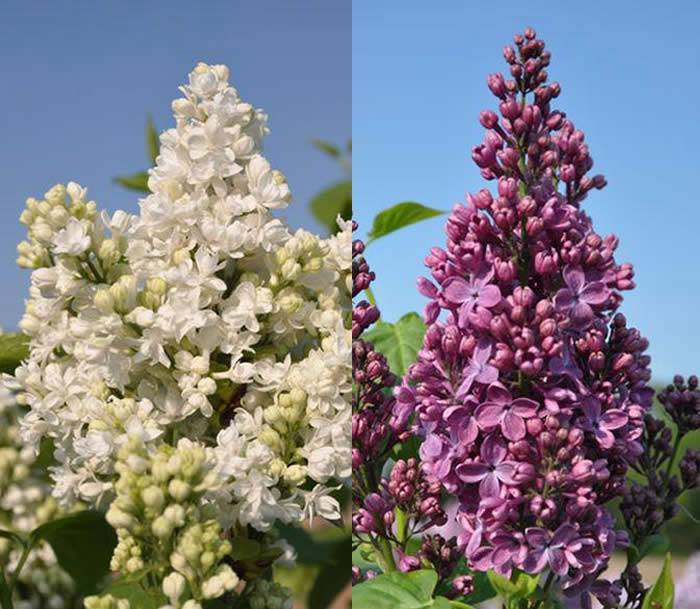
Lilac Trees for Sale UK: Heritage Common Lilacs Syringa Vulgaris Madame Lemoine and Syringa Vulgaris Ruhm Von Horstenstein
Other available Lilac hybrids include the compact Preston Lilac cultivar Syringa Prestoniae Agnes Smith producing clusters of pure white flowers with a sweet perfume. Slightly early flowering, hybrid Syringa X Hyacinthiflora Esther Staley has bright single pink flowers.
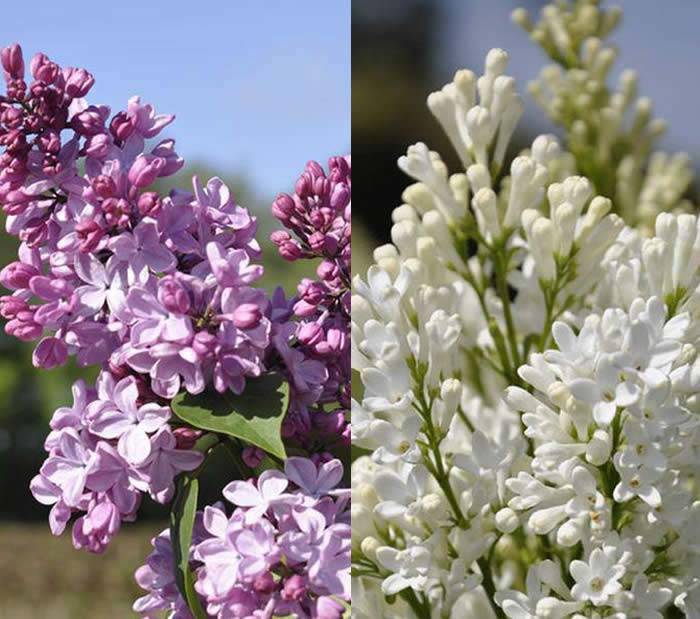
Lilac Trees for Sale UK: Lilac hybrid Syringa X Hyacinthiflora Esther Staley & Preston Lilac Syringa Prestoniae Agnes Smith
With so much to offer, we think it’s well worth sparing a thought for the Common Lilac when you are next planning your new garden, looking for an ornamental tree or shrub for an empty space or simply seeking a new addition.

